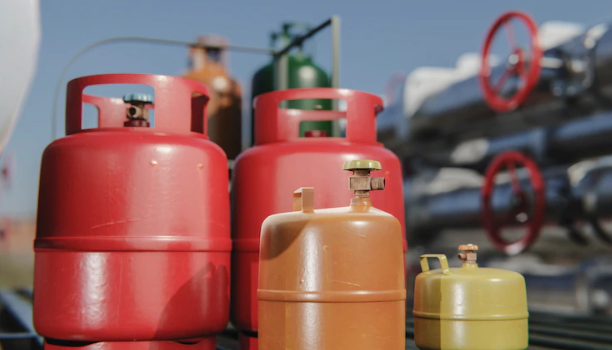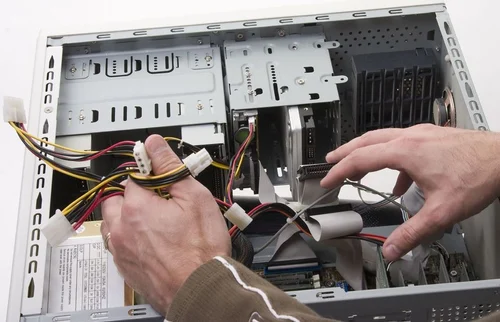
H2s removal from natural gas is a process that does not require electricity or external assistance to prevent pollution and other problems that would be caused by sulfur gas in natural gas. If you want to remove H2S from your natural gas, the best way to do so is with a hydrogen sulfide absorber.
What is H2S?
H2S is a gas that is produced when natural gas is burned in an incomplete or uncontrolled way. This can happen when a pipe bursts, when the gas company does not properly maintain the pipeline, or when someone tampers with the pipeline.
When H2S levels are high, it can cause health issues in people who are nearby. high School Removal Team has developed a detailed guide to help people learn about h2s removal from natural gas and how to protect themselves and their families.
Components of natural gas
Natural gas is composed of two parts, methane, and ethane. Methane is the main component of natural gas and it is also the most explosive.
To remove H2S from natural gas, the first step is to identify the components of natural gas. Then, an extraction process must be performed to break down these components into their pure forms. Once this has been done, extraction technologies can be used to remove H2S from the pure forms of methane and ethane.
There are several different extraction technologies that can be used to remove H2S from natural gas. The most common technique is an extraction process called Joule-Thomson Cyclonic Retrofit (JTCR). JTCR involves spinning a turbine around a central shaft.
This shaft is connected to a series of suction pipes. As the turbines spin, they create a tornado-like vortex that sucks up all the liquid and gas molecules located in the line. These vortices whirl around for a long period of time, which effectively extracts H2S from the natural gas.
Sources of H2S
Natural gas is a key source of energy for many homes and businesses across the United States. However, natural gas containing high levels of hydrocarbons (H2S) can be dangerous if not properly removed.
There are a number of methods that can be used to remove H2S from natural gas, but each has its own set of benefits and drawbacks. One of the most common methods used to remove H2S is flaring. Flaring occurs when unsafe levels of H2S are released into the atmosphere.
Flaring is often used as a last resort when other methods have failed. However, flaring can also cause significant environmental damage. It can produce toxic fumes that damage ecosystems, and it can release greenhouse gases that heat up the Earth’s atmosphere.
It is important to know about the risks and benefits of flaring before deciding whether or not to use it.
Effects of hydrogen sulfide
Hydrogen sulfide (H2S) is a poisonous gas that is created when natural gas liquids are decomposed. H2S is usually odorless and colorless but can have a sour smell.
The effects of H2S depend on how much is inhaled and how long it is breathed in. The most common effects of H2S exposure are headaches, nausea, chest pain, and shortness of breath. In high doses, H2S can lead to death.
The best way to avoid exposure to H2S is to avoid breathing in the gas. If you do accidentally breathe in large amounts of H2S, call an ambulance or go to the hospital. If you experience any of the listed effects after breathing in H2S, get medical attention immediately.
The H2S Removal Process
When it comes to removing H2S from natural gas, there are a few steps that need to be followed in order from start to finish. The first step is to secure the area that needs to be cleaned while the gas is still flowing. This can be done using clamps, chains, or even fences. Once the area is secured, a high-pressure water cannon can be used to dislodge the H2S particles.
Once the H2S particles are dislodged, they can be collected and disposed of in a safe way. Some companies may choose to burn them off, while others may simply dispose of them in an organic waste landfill. Regardless of how the H2S particles are disposed of, it is important that they not be released into the environment.
Waste treatment technologies
There are a number of different ways to remove high sulfur (H2S) gas from natural gas systems. One of the most common methods is to use a gas treatment plant. This plant uses several different technologies to remove the H2S gas from the natural gas.
One technology that is used in a lot of gas treatment plants is activated carbon scrubbing. This process involves using a screened filter to capture the H2S gas and then burning it off. This process releases toxic chemicals, but it is able to remove up to 95% of the H2S gas from the natural gas system.
Another technology that is used in a lot of gas treatment plants is thermal oxidization. This process involves heating the natural gas until it turns into hydrogen and carbon dioxide. The hydrogen burns off, releasing the H2S gas. Thermal oxidization is able to remove up to 95% of the H2S gas from the natural gas system.
Another technology that is used in a lot of gas treatment plants is flue-gas desulfurization (FGD). This process involves using flares to direct sulfur dioxide and hydrogen sulfide away from populated areas. FGD is able to release up to 99% of the H2S gases from the natural gas system without releasing any harmful products.
Which one to use?
There are a number of H2S removal products on the market, but which one is best for your situation? Here’s a guide to help you choose the right H2S removal product for your needs.
If you are using natural gas to heat your home, you may want to consider using an H2S Removal Product from Hydrogen Solutions. This product is made with high-pressure water and special emulsifiers that break down hydrocarbons into molecules that are safe to breathe. It is also environmentally friendly, as it does not leave any harmful residue behind.
If you have an oil burner or gas furnace in your home, you may want to consider using an impact-type H2S removal product. These products use high-pressure air and brute force to break down the hydrocarbons into smaller molecules that are easy to remove. They can be used on either oil burners or gas furnaces, and they leave behind very little residue.
Whichever H2S removal product you decide to use, make sure to follow the manufacturer’s instructions carefully. Failure to do so could result in serious damage to your home and potentially dangerous air emissions.
Conclusion
If you are feeling concerned about the health implications of fracking, chances are you have heard about hydrostatic pressure (H2S removal). In this article, we will provide a detailed overview of what H2S removal is and how it happens.
We will also discuss some of the health concerns related to H2S removal and provide tips for those who want to learn more about this topic. Finally, we will give you a few resources so that you can continue investigating this topic on your own.










